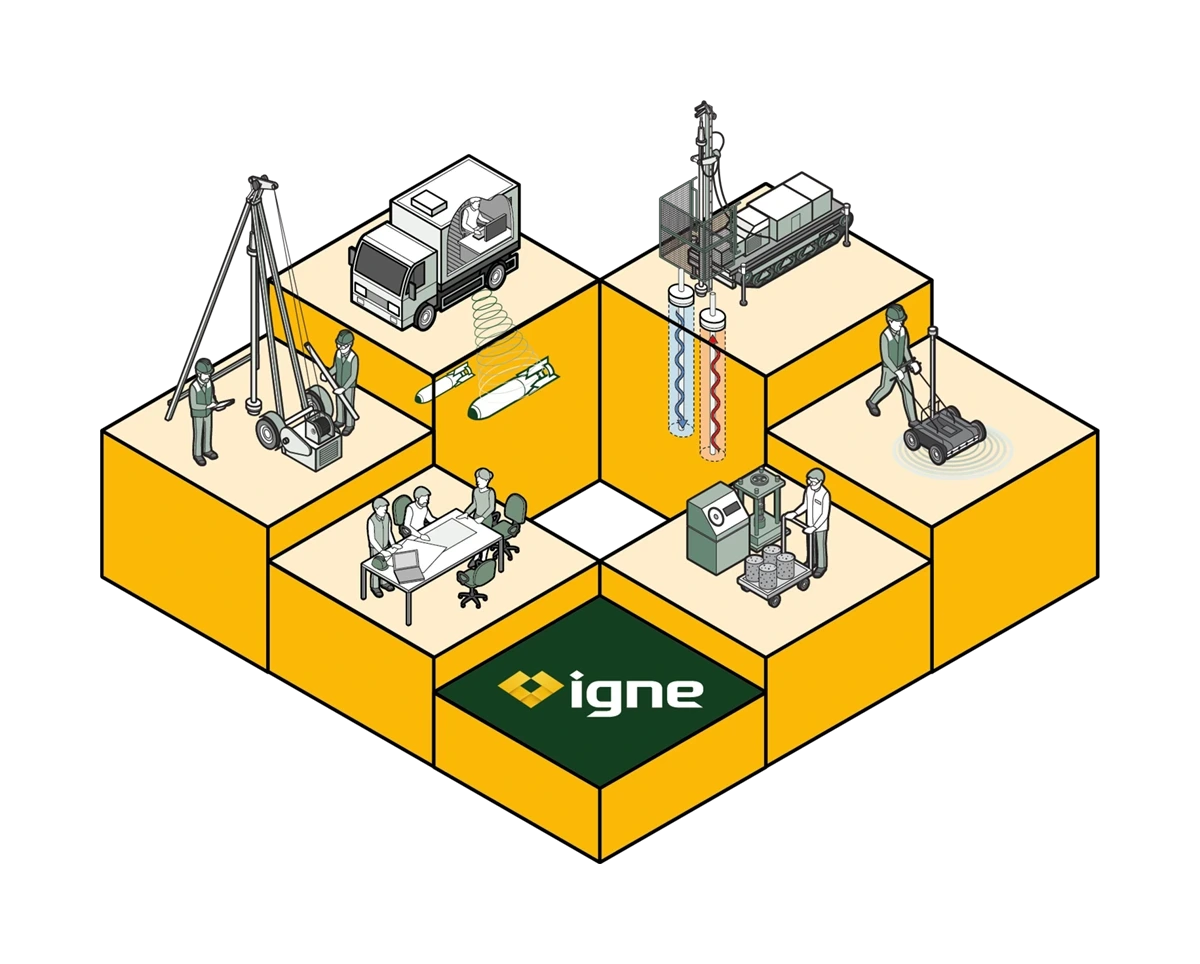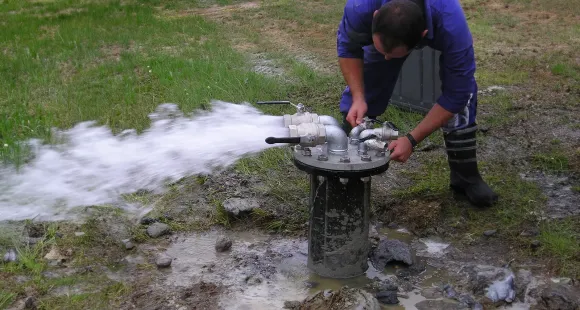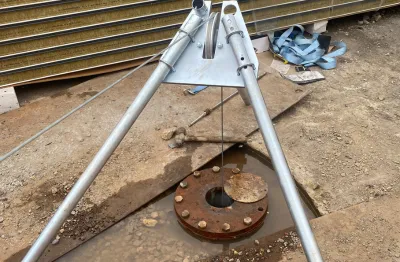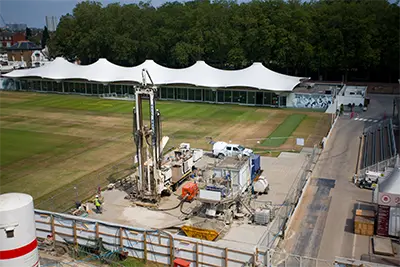

Wireline Geophysics
Wireline geophysics involves deploying specialised instruments into boreholes to measure and record the physical properties of subsurface formations
About
Understanding Subsurface Conditions
This technique provides continuous, high-resolution data that is invaluable for geological, geotechnical, hydrogeological, and environmental investigations.
At Igne, our wireline geophysical services enhance the understanding of subsurface conditions, aiding in more informed decision-making for various projects.

The Explanation
What is Wireline Geophysics?
Wireline geophysics refers to the process of lowering a suite of geophysical instruments into a borehole using a cable (wireline) to collect real-time, in-situ data on the geological formations encountered.
These instruments measure various properties such as natural gamma radiation, electrical resistivity, acoustic velocities, and borehole geometry. The data obtained is crucial for characterising lithology, identifying fractures, assessing aquifer properties, and evaluating rock mechanics.
The applications
Key Applications of Wireline Geophysics
- Lithological Profiling: identify and correlate different rock types and stratigraphic layers.
- Structural Analysis: detect fractures, bedding planes, and discontinuities within the subsurface.
- Hydrogeological Investigations: locate aquifers, determine groundwater quality, and assess hydraulic conductivity.
- Geotechnical Assessments: evaluate rock strength, elasticity, and other mechanical properties essential for construction and engineering projects.
- Environmental Studies: monitor contamination plumes and assess subsurface conditions for remediation planning.
The advantages
Benefits of Wireline Geophysical Logging
- Comprehensive Data Collection: provides continuous and detailed records of subsurface properties, filling gaps left by core sampling, especially in zones with poor recovery.
- Cost-Effective: enhances the value of boreholes by maximizing the data obtained from each drilling effort.
- Non-Destructive: offers a means to investigate subsurface conditions without altering the borehole integrity.
- Real-Time Results: enables immediate data acquisition and preliminary interpretation on-site, facilitating prompt decision-making.
- Risk Reduction: gaining a deeper understanding of your boreholes can uncover risks that may have previously gone unnoticed, such as fault and fracture information.
The experts
Our Wireline Geophysical Services
At Igne, we offer a comprehensive suite of wireline geophysical logging services tailored to meet the specific needs of your project. Our experienced team utilises state-of-the-art equipment to deliver accurate and reliable data, ensuring the success of your subsurface investigations.
FAQ
Frequently Asked Questions about Wireline Geophysics
- What types of measurements can be obtained through wireline geophysics?
Wireline geophysics can measure a variety of subsurface properties, including natural gamma radiation, electrical resistivity, seismic velocities, flowrates, structure and fault analysis, inflow and outflow zones.
- Is wireline logging suitable for all types of boreholes?
Yes, wireline logging can be conducted in both cased and open boreholes. However, the choice of specific logging tools and methods may vary depending on borehole conditions and project objectives. Primarily, an uncased borehole will provide the most valuable data.
- How does wireline logging complement traditional core sampling?
While core sampling provides physical specimens of subsurface materials, wireline logging offers continuous in-situ measurements along the entire borehole. This combination allows for a more complete and accurate characterization of subsurface conditions.
- Can wireline geophysics be used in environmental investigations?
Absolutely. Wireline geophysics is valuable in environmental studies for monitoring contamination, assessing subsurface conditions for remediation, and characterising geological formations that may influence contaminant migration.
- How long do typical wireline operations take?
The duration of wireline logging depends on the depth of the borehole and the number of logging runs required. However, it’s generally a rapid process, often completed within a few hours, minimising downtime and facilitating efficient project progression.
As we have the expert equipment and the experienced staff in-house, we ensure we deliver your data in as timely a manner as possible.
The Next Step
Enhance Your Subsurface Understanding with Igne's Wireline Geophysical Services
Leverage the power of wireline geophysics to gain detailed insights into subsurface conditions, ensuring informed decisions and successful project outcomes.
Contact Igne today to learn more about our wireline geophysical services and how we can assist with your specific project needs.


Advanced Drilling & Installations

Maintenance Contracts

Well Cleaning & Rehabilitation

Borehole Geophysics & CCTV

Wireline Geophysics

